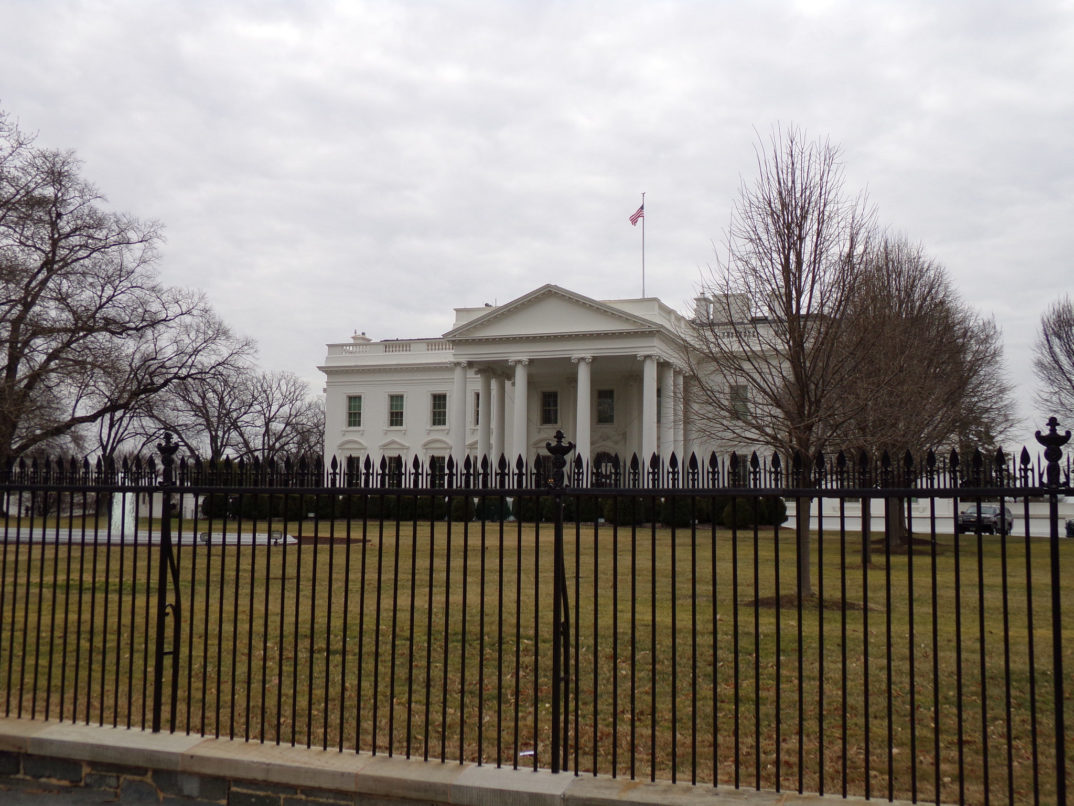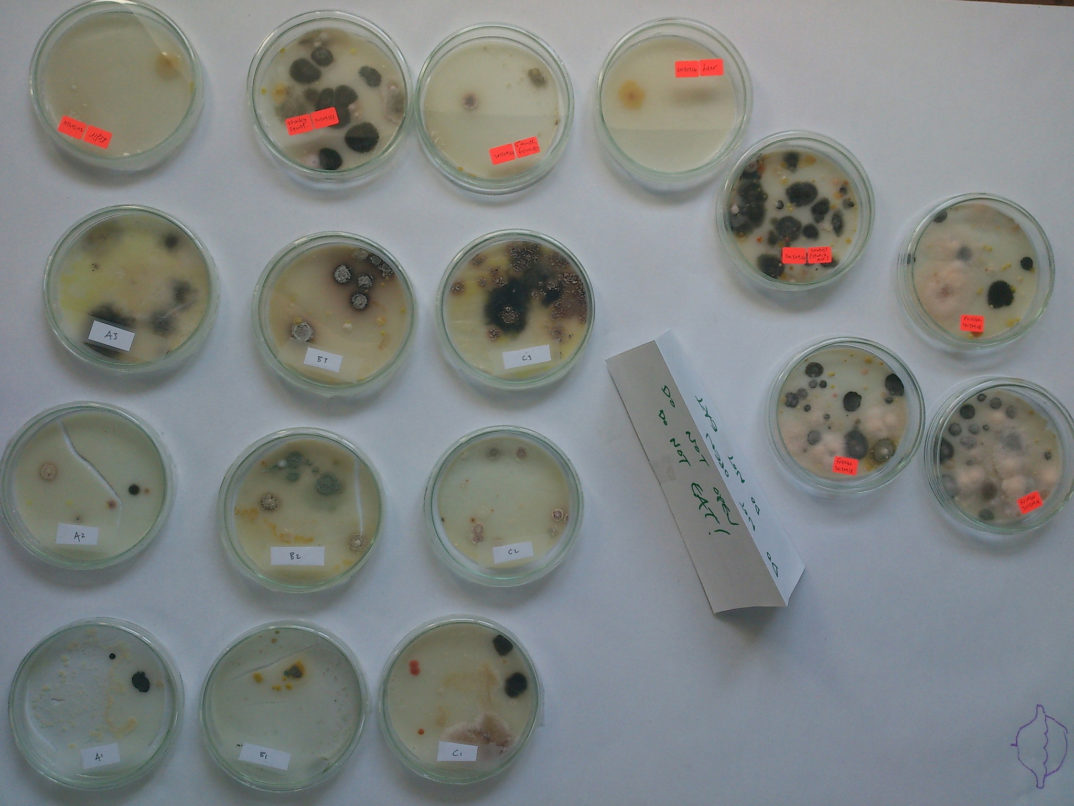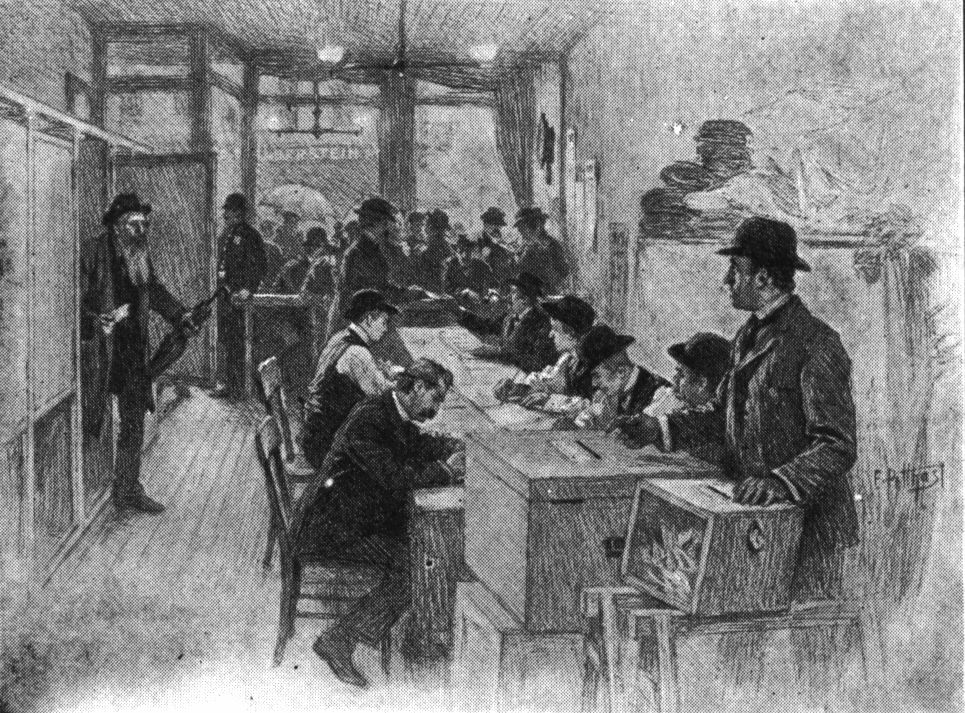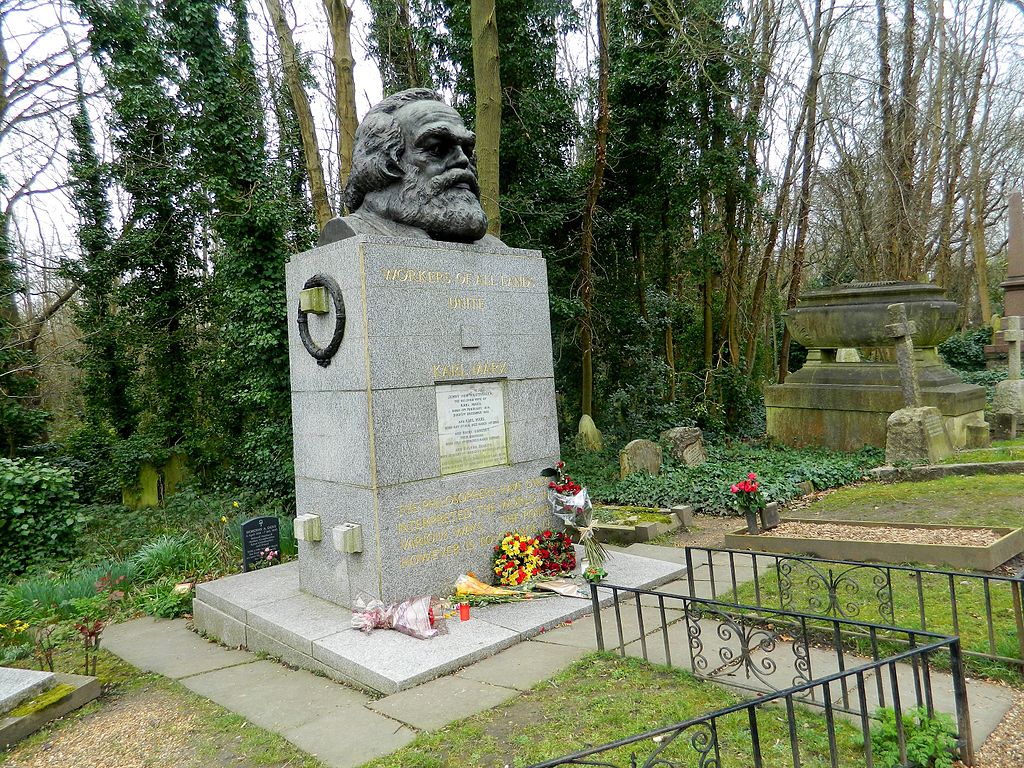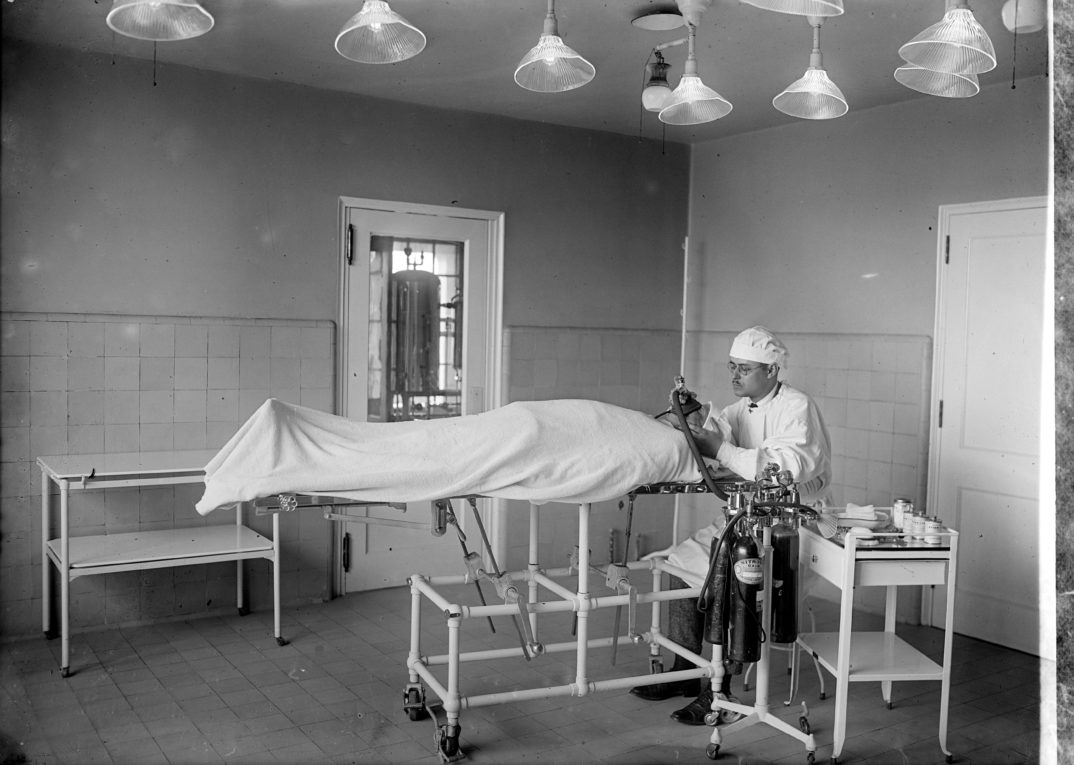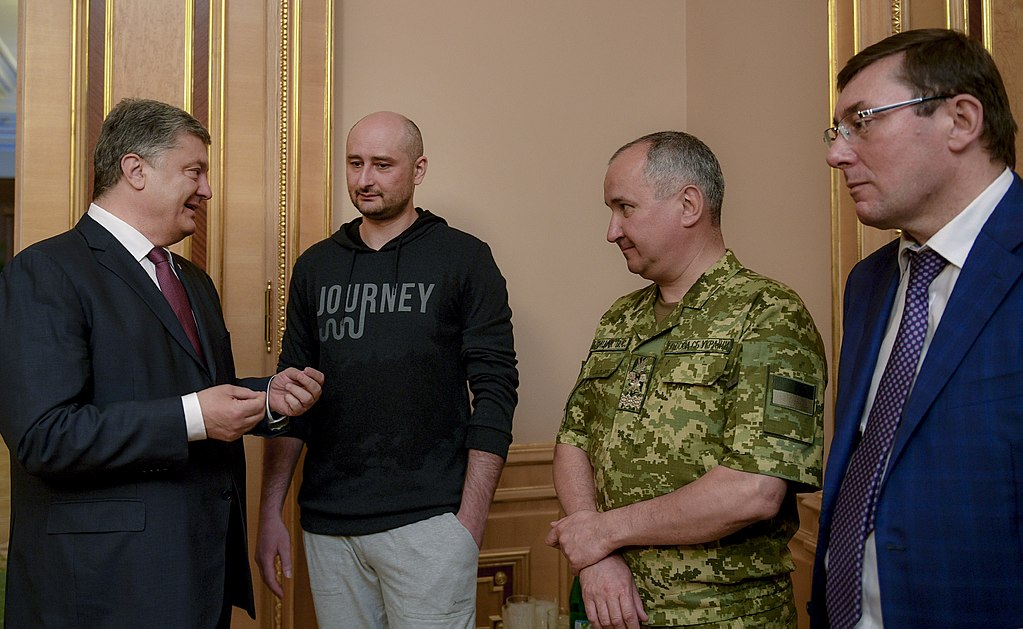There have been a number of interesting developments in interpreting the fossil record that smooth out our understanding regarding the connection between dinosaurs and birds. Continue reading “Classifying Species with the Help of Dino Dandruff”
A Trump Administration Press Secretary Walks Into a Restaurant
On Friday, June 22nd, the Trump Administration’s Press Secretary, Sarah Huckabee Sanders, arrived and was seated at the Red Hen restaurant in Lexington, Virginia. Sanders was one guest in a party arriving for a reservation for eight, booked in her husband’s name. When the wait staff realized that Sanders was with the party, they called the owner of the restaurant, Stephanie Wilkinson. Wilkinson dropped everything and rushed to the restaurant. She allowed her employees to vote on a course of action. They voted to ask Sanders to leave. Wilkinson approached Sanders and said, “I’m the owner. I’d like you to come out on the patio with me for a word.” Once they were out of earshot of other customers, Wilkinson explained that the values that Sanders publicly espouses and defends were not consistent with her own and that, as a result, Wilkinson must ask her to leave. Sanders complied with the request. The other guests in the party were invited to stay, but, unsurprisingly, they declined the offer. They had already been served appetizers, and Wilkinson insisted that their bill was on the house. Continue reading “A Trump Administration Press Secretary Walks Into a Restaurant”
Solving Antibiotic Resistance with the Power of Evolution
The problem of antibiotic resistance is real and growing. It is estimated that 700,000 people die from antibiotic resistant infections each year [1]. Further, every year, new multidrug resistant organisms emerge. We might soon face the global crisis of an era in which there is massive spread of bacterial diseases that cannot be treated by any currently available drug. In order to solve this problem, we must recognize that it has both scientific and ethical components: each time a physician prescribes an antibiotic she or he is required to balance individual patient needs with societal risks and benefits [2]. Further, even in the absence of antibiotic use, resistance is, and always has been, an evolutionary problem – natural reservoirs of antibiotic resistance exist even in pristine environments [3]. Added to this is the fact that over the last thirty or so years there has been a decrease in the number of antibiotics that have been developed and approved [4]. These factors make the problem of antibiotic resistance multifaceted and complex, but recent advances in basic scientific research show a promising way forward, even though previously implemented strategies to mitigate the problem have been largely unsuccessful. Continue reading “Solving Antibiotic Resistance with the Power of Evolution”
Ethical Questions about Poverty Tourism
If you choose to visit one of the world’s big cities, a sightseeing option that may be available to you is what is frequently referred to as “poverty tourism.” If you look hard enough, you’ll be able to find tour buses that will drive you through the poorest parts of the city—places that you wouldn’t see if you hitched a ride on the standard hop-on-hop-off tourist bus. Poverty tourism is common in places that have been hit hard by natural disaster. Tourists tend to be curious about the extent of the devastation. Continue reading “Ethical Questions about Poverty Tourism”
Should Political Apparel be Allowed in Polling Places?
Showing up to cast a vote in an election in the United States in the 18th and 19th centuries was a very different experience from the one with which we are familiar today. The occasion of casting a vote was a celebratory one, often attended by much food and drink. Voting was also a public act. In some cases, it was a matter of providing a signature under a candidate’s name, or vocally calling out one’s support for a particular candidate. Voter intimidation, often involving acts of violence, was common. Even when votes were cast on paper ballots, the standard was that a voting process was fair when “a man of ordinary courage” could make it to the voting window. The rowdy and dangerous atmosphere involved in casting a vote was offered as a weighty reason that the right to vote should be denied to women. In fact, the practice of voting was so corrupt, that one theory explaining the mysterious death of Edgar Allen Poe was that he was the victim of “cooping”—the practice of kidnapping less fortunate (often homeless) members of society, getting them drunk, and forcing them to vote repeatedly for a particular candidate. Continue reading “Should Political Apparel be Allowed in Polling Places?”
The Moral Legacy of Karl Marx
2018 is the 200th anniversary of Karl Marx’s birth. There have been some celebrations throughout the world (especially in his home city, Trier), but there have also been protests against it. Marx is accused of having been the ideologue of a system that ultimately murdered millions of people, and therefore, so the argument goes, he deserves no celebration. Continue reading “The Moral Legacy of Karl Marx”
The Ethics of Human Head Transplants Explored: Part One
They are not just plot points in bad horror films anymore. Real surgeons and medical doctors are currently exploring the feasibility of human head transplants. In fact, surgeons Sergio Canavero and Xiaoping Ren claimed in November 2017 that such a transplant was “imminent.” The surgery did not happen, but these two surgeons still claim they intend to perform a human head transplant.
Theoretically, in a human head transplant procedure, a special blade made from diamonds would be used to sever the spinal cord of the donor and recipient as cleanly as possible. The detached human head would be kept alive for a period of time at a very cold temperature and hooked up to pumps for oxygen and blood flow. The spinal cords from the donor and recipient would then be fused together using polyethylene glycol. Vertebrae, blood vessels, muscles, and organs would then be stitched together as well. The person would then be placed into a month-long coma, while blood and nerve networks are re-built, in hopes that the body does not reject the new head (or vice versa).
This whole proposal may sound absurd to you; multiple surgeons and doctors have also questioned on scientific grounds Canavero’s and Ren’s proposals for the procedure. Dean Burnett, neurosurgeon and columnist for The Guardian, writes, “The human body is not modular. You can’t swap bits around like you would Lego blocks, take a brick from castle and put it onto a pirate ship and have it work fine.” Burnett argues that one’s brain develops along with one’s body; as such, a relatively unique interface develops between the two. Simply put, no one knows what would happen between a brain and a body that do not share this interface that was built up through years of growth. The results may be traumatic and tragic.
What’s more, the experimental testing and preparation for a human head/body transplant by Canavero and Ren is quite weak. Canavero and Ren have conducted experiments transplanting rat heads onto rat bodies. Disappointingly, one of these studies involved 60 rats, but only 14 survived for any period longer than 36 hours. They have also claimed to have successfully re-fused the severed spinal cords of a dog and a monkey, but scant evidence has been published to back up these claims. Burnett notes that, in the monkey head transplant, the monkey never regained consciousness after the procedure and only survived for twenty hours after the procedure.
Numerous ethical questions, obviously, emerge from the prospects of human head transplants. As Paul Root Wolpe on Vox suggests, would attempting the surgery on humans at this stage be tantamount to murder? The attempted surgery would likely result in death for the human patient (or at best life in a persistent vegetative state), should it fail. Given the paucity of experimental evidence backing up the safety and efficacy of the surgery, one has little rational justification for believing the surgery, at this stage of development, would even succeed. Defenders of the doctors might reply that the proposed head transplant is offered as a last chance procedure for someone suffering from a degenerative terminal neurological disorder. The intent of the surgery is not to end the life of the person, but rather to save it. As long as the doctors do not manipulate the patient to consent to this radical procedure when other safer options still exist, a human head transplant would be as ethical as any other Hail Mary last chance medical procedure.
Terminal patients may have other life-affirming and important choices to make that would be forsaken should they choose to gamble with such a radical procedure, such as saying goodbye to loved ones, making psychological peace with death and oneself, and having control over ending one’s life in a personally dignifying manner. The doctors advocating for trying this surgery on a degenerative terminal patient might not have the patient’s best interests at heart. In addition, it is not clear if the decision to volunteer for this procedure (at its current stage of development) could be considered rational. While respect for a patient’s decisions is generally important, some obviously harmful and irrational decisions do not accord such respect. A patient who believed that an obviously harmful action would cure him a disease, say ingesting large amounts of a strong poison, should probably be stopped from carrying out this action. Having your head cut off in hopes of a successful head transplant may be considered analogous.
Another important moral question concerns fairness and the allocation of organs. There is a severe shortage in viable transplantable organs in the United States. According to the United Network for Organ Sharing (UNOS), twenty people on average die each day while waiting for an organ transplant. What’s more, one organ donor can save up to eight lives. If a person were to donate their whole body for transplant, rather than their individual organs, that would theoretically deprive seven needy people of viable organs. Another allocation issue concerns cost: the head transplant procedure’s cost was estimated at $100 million USD. It may seem unfair to spend that much money on the vanishingly small likelihood of saving one person, considering what this amount could do for many more people.
Presume, now, that the above moral and scientific questions are overcome, and head transplants become a real (if not regular) part of the medical community’s transplant procedures. We are still left with an intriguing metaphysical question, one that would have serious ramifications for morally and legally fraught issues. What person would emerge from the procedure? The assumption is that the person to whom the head originally belonged is the “recipient” of the transplant, and the person from whom the body came “the donor.” But, is this correct? Is there any basis for conceiving of it the other way around? More intriguingly, it may be that the resulting person after the procedure is a third person metaphysically distinct from either the donor or the recipient. These issues will be discussed in a follow-up post.
Debunking the Marshmallow Myth: Rationality in Scarcity
On May 25th, researchers published findings that altered our understanding of a classic psychological study, the marshmallow test. In the famous test, young children are offered a marshmallow now, or two marshmallows later. Then, researchers follow up with the children, and supposedly those that delayed gratification for more marshmallows did better in terms of standardized tests and other measures of success. Continue reading “Debunking the Marshmallow Myth: Rationality in Scarcity”
Family Separation at the U.S.-Mexico Border
At the U.S.-Mexico border, parents are being separated from their children after crossing the border illegally. The Trump administration has given multiple, conflicting defenses of the practice, each defense warranting a separate assessment.
Continue reading “Family Separation at the U.S.-Mexico Border”
A Journalist Fakes His Own Death. Was His Decision Moral?
Russian journalist Arkady Babchenko was allegedly murdered in Ukraine by hired killers working for Vladimir Putin’s regime. A picture of his body bathed in blood was publicized. Then, in an astonishing twist of events, 24 hours later Babchenko appeared in a news conference to inform that, indeed, he was alive, and it had all been a deception.
Continue reading “A Journalist Fakes His Own Death. Was His Decision Moral?”
The Ethics of the Masterpiece Cake Shop Decision
On June 4, The Supreme Court announced its 7-2 ruling in favor of a baker who refused to bake a cake for the wedding of a same-sex couple. The public response was intense on both sides. People took to the streets and to social media to express their attitudes about the decision. One common misconception in the popular commentary on this topic appears to be that the Court ruled that places of business have the right to discriminate against patrons for religious reasons. The Court’s decision was actually much narrower. It did not create a religious exemption from anti-discrimination laws.
Continue reading “The Ethics of the Masterpiece Cake Shop Decision”
The Real and the Rented
The New Yorker recently published a fascinating article about the “rent a family” phenomenon in Japan. Elif Batuman reports that businesses with names like “Family Romance” sell the services of actors who play various roles. One man missed his dead wife and estranged daughter, so he hired actors to come to his house and take their place at the dinner table. The relationship continued for some time until he was ready to get back in touch with his real daughter.
Roseanne Barr and Samantha Bee: Political Comedy’s Unwritten Rules
At the end of May, Rosanne Barr, star of a hit TV sitcom, tweeted that Valerie Jarrett, a black advisor to President Obama, was (somehow) the offspring of the Muslim Brotherhood and The Planet of the Apes. ABC cancelled her show and apologized to Jarrett. Then, a few days after the Barr incident, Samantha Bee, star of a political comedy show, called Ivanka Trump, the president’s daughter and advisor, a “feckless c***” for insensitively posting a picture of herself holding her young son in the midst of growing attention to the way children are being separated from their parents at the US-Mexico border. She apologized, as did her network, TBS, but she wasn’t fired.
Continue reading “Roseanne Barr and Samantha Bee: Political Comedy’s Unwritten Rules”
3D Scans, Archaeological Sites, and “Digital Colonialism”
During the height of its power, the Islamic State in Iraq and Syria (ISIS) destroyed and looted numerous cultural heritage sites under its control. In January 2017, it was reported that ISIS had destroyed two ancient structures in Palmyra. Cultural heritage sites are also prone to natural disasters. An earthquake that hit an ancient city in Myanmar in 2016 damaged numerous temples located there.
Continue reading “3D Scans, Archaeological Sites, and “Digital Colonialism””
“Incels” and the Right to be Loved
If you’re like me, you cringe when you hear the word “incel” and never use it without scare quotes. Of course, there have always been people who are involuntarily celibate, but when they band together as a named subculture, something’s seriously amiss. I’m pretty sure I’d see it that way even if there weren’t four recent cases of men venting their sexual frustration by slaughtering people—one having done so explicitly as an “incel.”


